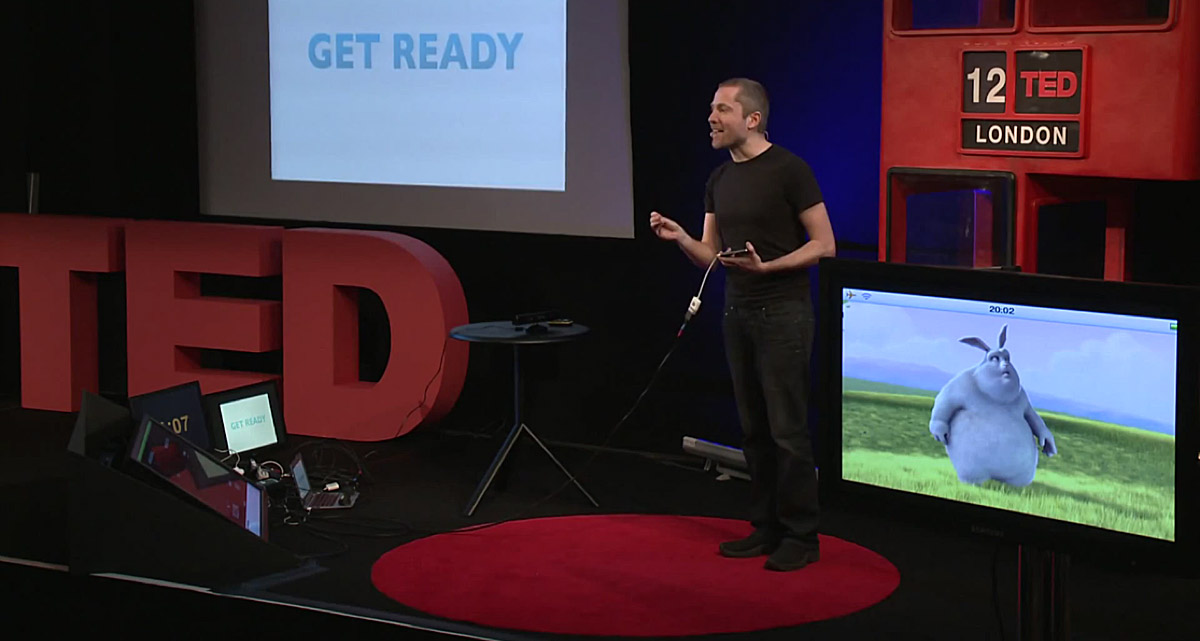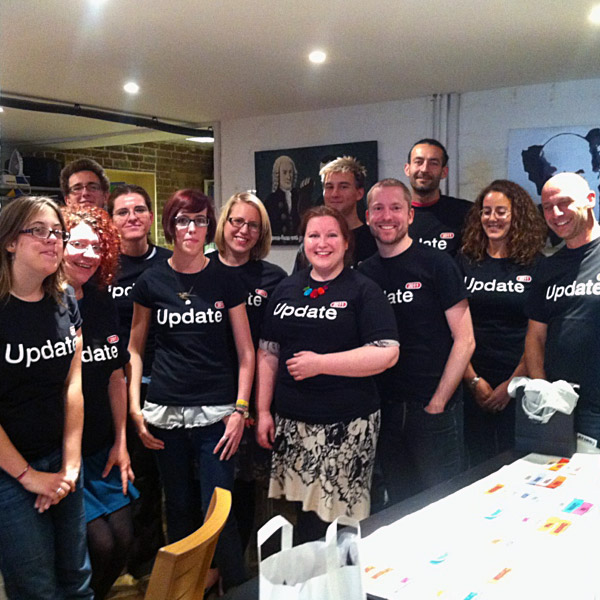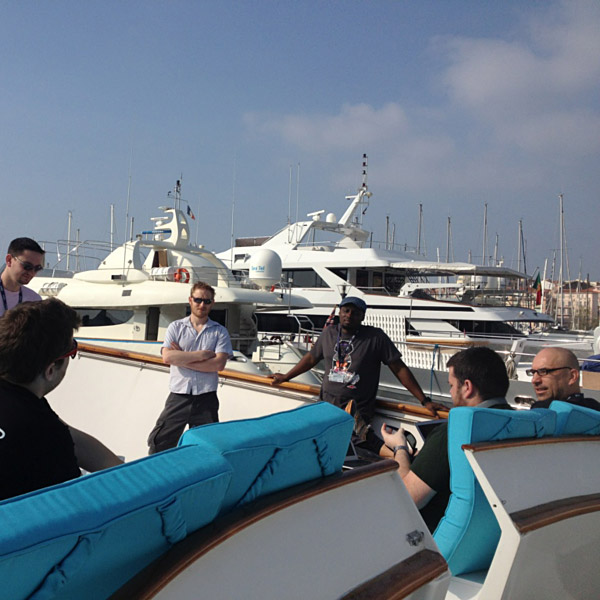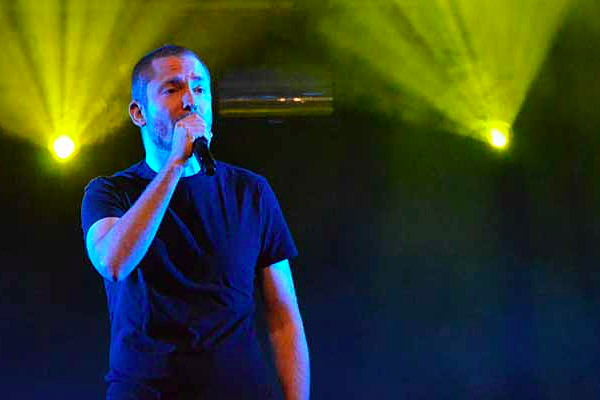An idea worth spreading

This April, I gave a talk at TED@London on how I believe that we can change the world through design that empowers, amuses, and delights. My talk was part of the TED Talent Search and it has me in the running to speak at TED Global 2013.
What I want to do is to help bring design thinking to open source.
I would really appreciate it if you could watch and rate the video and leave a comment to let me and the TED folks know if you enjoyed it and would like to see me speak at TED next year. It’s only 4½ minutes long and your feedback will play an important part in influencing whether or not I get to share the message with a wider audience next year.
But I’m getting ahead of myself here… I just skipped to the end of the story without telling you the tale that led up to it. And the simple truth of it is that none of this would have happened had I not made a conscious decision last year to step outside of my comfort zone.
There’s nothing comfortable about a comfort zone
The irony of comfort zones is that they really aren’t at all comfortable. When you’re in one, you’re usually painfully aware of just how uncomfortable it feels. It’s the last place you want to be and yet you’re trapped inside by our old friend, fear. Comfort zones are not about comfort but safety. Outside the walls that cage you lay endless new possibilities for making mistakes. Or, in other words, endless new possibilities.
So, I decided sometime last year that I needed to make a conscious and ongoing effort to step outside of my comfort zones. Before you can step outside of a comfort zone, however, you have to identify it and acknowledge that it exists.

I’m an only child and, as such, I’ve always been rather self‐sufficient. When I made my iPhone app Feathers, for example, I did everything on it from the design, to the development, to the web site, to the marketing by myself.1 It was clear that one of my comfort zones was that I was perfectly happy working by myself. I decided that in order to step outside that comfort zone, I should try and do more projects in collaboration with other people. So, when the opportunity came along to help launch the Brighton Digital Festival, I jumped in with both feet and joined the steering committee2. To push myself even further outside my comfort zone and to truly invest in the festival, I also created a new international conference for it called Update3. In the process, I got the opportunity to work with the best team of volunteers anyone could have asked for. And, together, we created a design‐led conference that people absolutely loved.
I also realised that one of my comfort zones had become making iOS apps and so I thought it would be fun to try my hand at something different. Towards the end of the year, backed by my lovely friends at Lighthouse, we submitted a proposal to the BBC and the Arts Council for shooting an interactive location‐based film for The Space. Unfortunately, our proposal wasn’t picked. You win some, you lose some; the important thing is to keep trying. So, at the start of this year, I found myself free when the lovely Emma Mulqueeny4 mentioned that they were running a hack day in Cannes and asked if I’d like to take part.
On vanity
Now I’m going to be honest with you, my first thought when Emma asked me to take part in the hack day was ‘wait a second, is she asking me to compete? Not to speak? Or judge?’ Folks, meet vanity. Ugly isn’t it? Thankfully, my second thought was, ‘wait a second, when did I get so stuck up my own ass?’
Comfort zones are the walls we build around ourselves out of fear.
I’ve loved every BarCamp and hack day I’ve ever taken part in and I’ve loved them precisely because they are these friendly, unpretentious, accessible events where people come together to share their knowledge and make cool things. I realised that because I am fortunate enough to get to speak at conferences and judge competitions these days, I had grown distant from the simple joys of attending, taking part, and making things. How sad is that? Well, I decided that it was really rather sad so I took Emma up on her kind offer and flew to Cannes to spend a night on a boat hacking with an awesome bunch of makers.

And, boy, am I glad that I went. It was such a beautifully freeing experience to just concentrate on making stuff for a whole day. The result was Grab Magic, a hack that enables you to grab the image that’s on your television screen with your hand and transfer it to your phone so you can share it with your friends. You really need to watch my talk to see exactly how it works as words don’t really do the experience justice. I presented Grab Magic to the jury at the MIPCube conference in Cannes and it won the hack day. This meant that I got to present an expanded version of my talk at the opening keynote of the main MIPTV conference. And, when I wrote to the lovely folks at TED to ask them if they’d like to see it in London, they responded with an enthusiastic yes.
Without stepping outside my comfort zone, I would never have taken part in the hack day in Cannes, created Grab Magic, or gotten the opportunity to present at TED@London. Nor would I have the chance I do today of presenting at TED next year.
Comfort zones are the walls we build around ourselves out of fear. Break down those walls, try new things, make some mistakes, get some mud on your face… and, most importantly, enjoy every moment for they are of a precious few.
The backstory
Grab Magic is a symptom of my approach to design.
This post actually started life as a comment on my TED@London video to say thank‐you to the kind folks who rated the talk and left me feedback. I also wanted to give the TED community some background on the design philosophy behind Grab Magic and credit the open source libraries I used while making it. Finally, I wanted to share my thoughts on what I want to speak about at TED Global 2013 if I get picked. However, I realised that my comment was rapidly turning into an essay and I didn’t want it to overshadow the other comments in the thread. So, here I am, writing this post instead.
On design thinking and open source
Grab Magic is a symptom of my approach to design. Given the time constraints in my talk, I could only hint at that approach. If you’re interested in learning more about my design philosophy, watch the recording of a long-form talk I recently gave as the opening keynote at the Norwegian Developers Conference in Oslo. It’s called A Happy Grain of Sand and, as an additional bonus, you will get to hear me sing Pity the Child from the musical Chess at the beginning of the talk.5

If I do get the opportunity to present at TED Global next year, I want to talk about the primary importance of design in creating beautiful experiences for humans. Furthermore, I want to stress that if we can entrench this philosophy in the culture of open source, we can change the world by making things that are not only beautiful to behold and use but which are also open, accessible, and hackable. We can make things that empower people and give them a level of control over their lives, privacy, and data that is simply not possible with proprietary devices like iPhone and proprietary services like the ones from Google, Facebook, Apple, and Twitter.
Open source must be design‐led to compete in the consumer space.
What I want to do is to help bring design thinking to open source. This is a crucial element that is currently missing from hacker culture. Open source must be design‐led to compete in the consumer space. Furthermore, I feel that it is imperative that open source does succeed in the consumer space if we want an alternative to a future where all our data and behaviours are filtered through corporate entities; where we are forced to rent access to our devices and our data instead of truly owning them. I believe that bringing design thinking to open source is an idea worth sharing. If you agree, please watch and rate my TED@London video so that I can share this vision with the world at TED Global 2013 and hopefully inspire enough people so that we can take the first steps towards realising it.
Credits
Grab Magic uses a number of open source components, without which I simply could not have built it in such a short period of time (if ever). I'd like to briefly credit those projects here and take the opportunity to thank the authors of these libraries for sharing them freely with me and everyone else.
Grab Magic is made up of two parts: the TV App and the iPhone app. The TV App is built using Processing, ‘an open source programming language and environment for people who want to create images, animations, and interactions.’ It uses a number of open source libraries to interface with the Microsoft Kinect, including OpenNI, NITE and SimpleOpenNI. The video playback is courtesy of the GLGraphics and GLVideo libraries. The web socket communication between the ‘TV’ (really, my laptop) and the iPhone is facilitated by the websocketP5 and SocketRocket libraries.
Grab Magic itself is open source. You can download the source from my project page on GitHub.
Finally, I must acknowledge my heartfelt gratitude to Syd Lawrence, one of my fellow hack day participants in Cannes, for pointing me to sample code and some of the above‐mentioned libraries. His help was invaluable in getting me started on the project.
There’s more…
Almost three hundred people from fourteen different cities presented talks during the month‐long TED Talent Search. The experience was great in and of itself and I got to meet some amazing people and watch some very inspiring talks from my co-presenters at TED@London. Please do check out their presentations. Of special note, please don’t miss Eleanor Longden’s moving and personal talk on learning from the voices in her head and, if you need a laugh, watch Mike Wood’s excellent comedy routine involving a catapult and a cabbage (need I say more?)